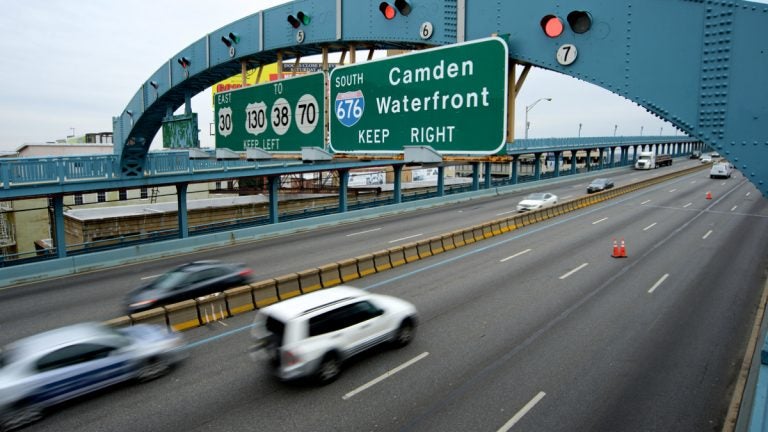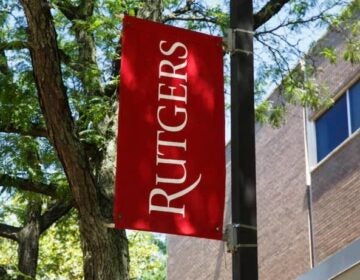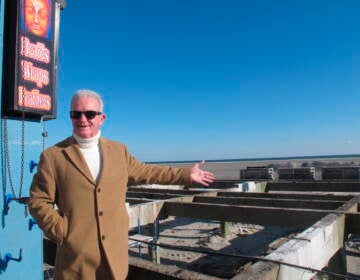Why Pa-NJ bridge operator offers a discount to drivers but not PATCO riders

The Ben Franklin Bridge is one of the four bridges operated by the Delaware River Port Authority. (Bas Slabbers/WHYY)
When the Delaware River Port Authority announced in July that some drivers who routinely cross its four bridges will get a discount on tolls because the agency was bringing in more revenue than it needed, not everybody was thrilled.
Some PATCO riders criticized the move in DRPA meetings and on social media, asking why mass transit users were not also being offered a break on fares.
The DRPA oversees four bridges that span the Delaware River — the Benjamin Franklin, the Walt Whitman, the Commodore Barry, and the Betsy Ross — as well as the PATCO Speedline.
(WHYY’s PlanPhilly took a deep dive into the plan when it was first announced.)
More recently, opposition manifested in the form of a Change.org petition calling on the DRPA to offer frequent-flyer discounts to PATCO riders, too. “Public transit should be encouraged,” the petition reads. “Driving should not be incentivized and rewarded.”
But in the face of some public opposition (the estimated 29,000 people eligible for the discount likely hold a rosier view of the plan), the DRPA has only reiterated its position that disincentivizing driving and discounting train fares would hurt the agency’s bottom line.
That’s because the DRPA runs on bridge tolls. Tolls fund the operating budgets of all four bridges. Tolls also fund half of PATCO’s budget, while train fares pick up the other half.
Last year PATCO ticket sales brought in $26 million. Bridge tolls yielded $310 million.
So when the DRPA issues public bonds to obtain quick cash for new projects, bond rating agencies judge the health of the DRPA by looking at the degree to which bridge tolls subsidize the PATCO system, according to CEO John Hanson.
“Our financial advisers have advised us that in order to remain in good standing with the financial community, we should not let that subsidy of PATCO exceed 50 percent,” he said.
In other words, offering PATCO discounts would cut into the railroad’s fare revenues and reduce its contribution to its own operating budget, forcing bridge toll revenue to pick up the slack above the 50 percent it already funds.
On top of that, the DRPA also uses bridge toll revenue to fund all of its capital projects, meaning it pays off those public bonds once they come due. And according to Hanson, Wall Street is paying close attention.
The DRPA conducted a study to show that the agency would still be able to fund its operating costs and pay down its debt in spite of the modest toll discount (an $18 credit for 18 or more trips in a month), all in a bid to pacify investors.
“The funding model for DRPA relies on bridge tolls to pay the bills,” said Hanson, “so that’s what we have to focus on: how we can maintain the strongest financial position while serving the public.”
Despite the DRPA’s unwillingness to discount PATCO fares, the agency supports its railroad in other ways, said Hanson.
For example, he noted that the affordability of PATCO has been “baked in” to fare increases.
In 2008 the DRPA hiked bridge tolls for passenger vehicles by 33 percent, while it only increased PATCO fares 10 percent. In 2011 tolls went up 25 percent, while PATCO fares only jumped another 10 percent.
Another way the DRPA supports PATCO is by investing in it. Hanson said the agency is bankrolling two of the largest improvement projects ever on PATCO: $105 million for track rehabilitation and $200 million for train car refurbishment.
“Sometimes people hear me talk about this and they think that we don’t value the PATCO customers, that we don’t care about them,” said Hanson. “That’s absolutely not true. Our mission is to operate that railroad and to operate it the best way we can.”
But while the bi-state agency claims to focus squarely on operating the four bridges and PATCO, it ducks the murkier questions of public policy.
For example, the DRPA responds to criticism that the toll discount incentivizes driving, which is a known cause of pollution, by offering a monetary justification.
“For us to try and get people off of the bridges would be a financial disaster for the bridges and for PATCO,” said Hanson, referring to the agency’s overwhelming reliance on bridge toll revenue.
“We really are hamstrung in this idea of, ‘Well, it’s a good idea, it’s a socially desirable idea to take people off the bridges.’ That may be true. It’s not something we spend a lot of time focusing on, because … the way we pay for all the debt … [and] all the capital costs of [DRPA and PATCO] is through those bridge tolls that we generate.”
Drivers will have to register online using their E-ZPass accounts to receive the monthly refund.
WHYY is your source for fact-based, in-depth journalism and information. As a nonprofit organization, we rely on financial support from readers like you. Please give today.




